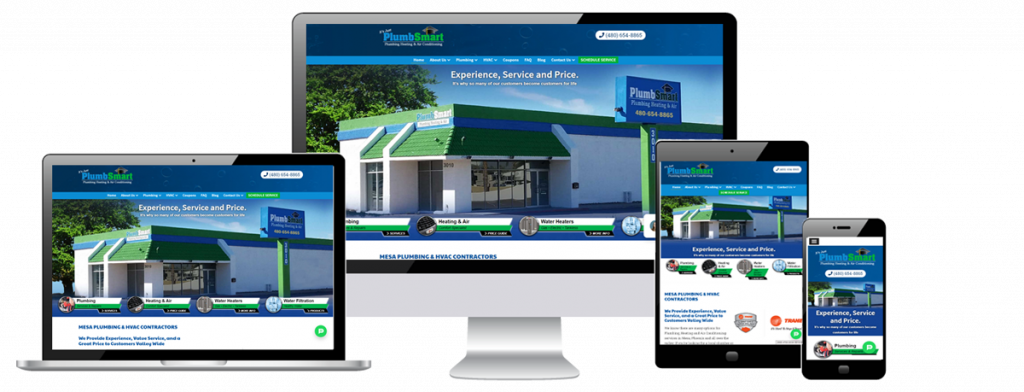Many small business owners focus on doing what they do best. They bake pastries, fix cars, remodel homes or do taxes. These products and services are what they’re good at, and the reason they started a small business in the first place. But what many don’t realize is that when it comes to successful businesses, selling these products and services depends on data.
There’s an ocean of data out there and it’s available every day. What most people don’t realize is that all this data paints a picture. It shows you things about your company that you might not know otherwise. Looking at the data, understanding it and seeing the picture is the best way to drive success in your company. The best part? It doesn’t matter what products or services you sell. All that matters is that you’re looking at the right metrics.

Vanity metrics vs. actionable information
If you Google “small business metrics,” you’re going to get infinite lists of data points you should be paying attention to—everything from website bounce rates to cost-per-acquisition. The fact is, not every metric is equally important. What matters is the information they give you.
Before you fall down the rabbit hole of key performance indicators, benchmarks and other important measurements, take a moment to realize what matters and what doesn’t (at least for you). Start by striking vanity measurements and instead, focusing on measurements that give you real, actionable information.
What are vanity metrics? They’re measurements that look good, but don’t have value. Take a metric like number of people on your email list. You might have an email list with one million people subscribed. Amazing! But ask yourself—does that matter? Many marketers would argue that it doesn’t. What matters more is the open rate for that email list. If your month-over-month open rate is just 20 people, your million-subscriber list doesn’t look so impressive. The value isn’t in how many addresses you have, it’s in how many people care to open your emails.
Before you start looking at measurements, ask yourself what information you’re getting from them. Then, look for measurements that inform you with actionable information. If you can learn something from a metric and use that information to improve your company, it’s very likely worth paying attention to. Below are some examples.

Website metrics
Website measurements can tell you how effective your website and its pages are at attracting people, retaining them and informing them. If your goal is to get people to visit your website and, ultimately, buy a product or service, you need to make sure your site is effective in doing that. That starts with these three key small business website metrics:
- Overall traffic: How many people visited your site?
- Traffic sources: Where did visitors come from?
- Time on site: How much time did visitors spend on your site?
Those measurements represent the three phases of lead capture. Once you know how many people visit your site, where they come from and how long they spend on the site, you’ll know how to improve your sales funnel.
Say you learn that 80% of your site traffic comes from Reddit—about 3,000 people per month. The average time spent on your site is just over two minutes. Altogether, this tells you where your biggest opportunity for marketing is and can inform you about how to make your site better based on what these people are looking for.
Conversions
It’s always good to know what your sales numbers look like. But it goes beyond surface sales figures. There are several important conversion points you need to know in order to streamline your sales process and become more effective in closing deals. Here are four such sales measurements for small businesses:
- Total leads: How many people are interested?
- Total conversions: How many interested people purchased?
- Total sales: How much did you sell (in dollars)?
- Cost per acquisition: How much did it cost to attract a lead that converted?
Again, these four give you a comprehensive picture of how well you’re selling your products and services—and they teach you how to sell them better. For example, if you have a low number of leads and a high conversion rate, it means you’re really good at selling but not so great at attracting new interested customers. Likewise, if you’ve got high conversions but low total sales, it might mean you need to reexamine your margins. And, if your cost per acquisition is high, you likely need to reevaluate your marketing spend and strategy.
Customer retention
Your customers are your most valuable assets and the key to your small business’ success. Hanging onto them and creating repeat business is important, and so is fostering healthy interactions. The best customer is one that buys regularly, advocates for your brand and continues to generate revenue for your business in new ways. Here are four that can help you foster those goals:
- Lifetime value: How much revenue can you attribute to a customer?
- Upsells: How many times did a customer exceed their average spend?
- Referrals: How many customers have you acquired through other customers?
- Net promoter score: How likely are customers likely to recommend you?
These measurements tell you where to focus your efforts. A customer who has bought for years and constantly refers other people to you might not need as much encouragement to buy—and they might be the first person you ask to review a new product. Conversely, a customer with low spend and few purchases might be a prime candidate for a new marketing campaign you’re rolling out. Paying attention to retention will foster better interaction between your brand and its customers.

Social media metrics
Tracking social media is easy for small businesses. Unfortunately, seeing the data isn’t enough. You need to understand why it’s important and what it means in the context of your brand. It’s not enough to have 1,000 likes on a post or a follower list of one million subscribers. What matters is how you’re connecting with these people and whether that connection is meaningful to them. Here’s a quick refresher on basic social media measurements:
- Shares: People who have exposed their friend circles to your message.
- Comments: People who responded to your social post.
- Reacts: People who interacted with your social post.
Shares are the most important metric here, because they expose your brand to the largest, most valuable audience: people who might not follow you. Shares are a great way to attract new followers. Comments are also valuable—a they open up a line of dialog with the customer for a chance at a meaningful interaction. Reacts are important, but only for informing the type of content your brand puts out. If one post gets 20 laughing emojis and another gets 2,000, it’s a no-brainer to create more of the latter-type content.
Pay attention to the metrics
Every small business owner should track the measurements above, at a minimum. Look at the data associated with each metric and how it compares to similar stats you’re tracking. Then, put it together into actionable steps for improving your business. And don’t forget to track those changes! You’ll quickly find that data-backed decisions yield measurable results, which perpetuates a cycle of success. Once you know what you’re doing, you can keep doing it well (or learn how to do better). It all starts by looking at measurements that matter for small businesses.









